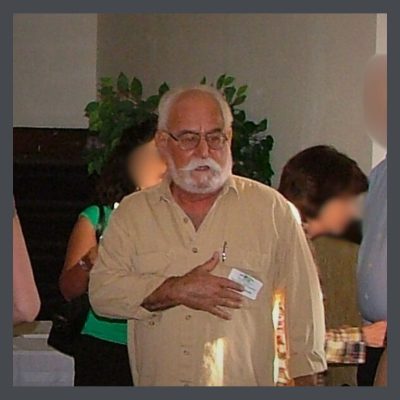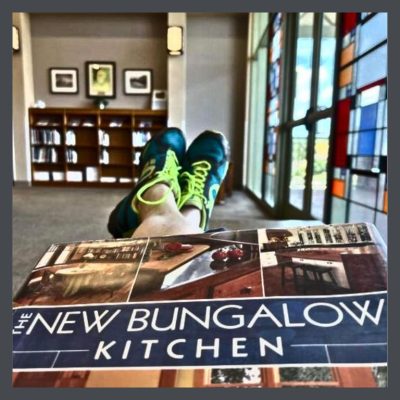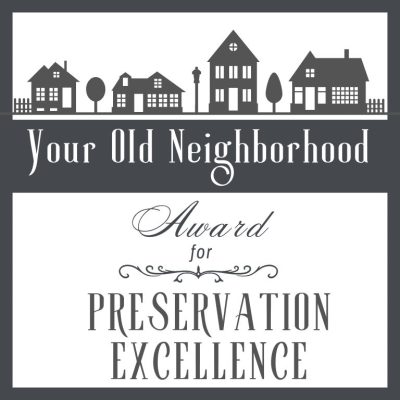 The members of my neighborhood preservation committee were the people with whom I felt the most kinship. When I left L.A. to live in Tampa, I purchased a bungalow only one block away from the chair of the committee, Dr. Steve Gluckman. A PhD archeologist, Steve was one of the brightest, warmest people I have ever known. Two decades earlier he had been one of the founders of the association & as it grew, he implemented the preservation committee.
The members of my neighborhood preservation committee were the people with whom I felt the most kinship. When I left L.A. to live in Tampa, I purchased a bungalow only one block away from the chair of the committee, Dr. Steve Gluckman. A PhD archeologist, Steve was one of the brightest, warmest people I have ever known. Two decades earlier he had been one of the founders of the association & as it grew, he implemented the preservation committee.
Reeling from losing our fight in L.A. to save a Streamline Moderne grocery store, I was searching for sanctuary. Looking online for communities that had successfully fought destruction by big box stores, I found Steve who had led a winning campaign to save a street of historic bungalows in Tampa. I called him instantly. He answered my call as though he was standing by the phone, waiting for it to ring. At this terrible time in my life, I was ready for his warmth & sparkle.
Moving to Tampa, Steve took me under his wing & introduced me to the preservation community, providing me with instant friends & great resources. He educated me on the neighborhood & when the president of my L.A. association came to visit, he took her on an informative & amusing tour. He supported all my wild ideas & in general, was a true friend & a wise & patient mentor. He carried a little stool in the back of his truck & gallantly steadied me so I could climb into the cab & be ferried about this new, unfamiliar city.
 We lost him the night before he was scheduled to be filmed for the documentary about the neighborhood. It was an enormous loss to preservation, to our community & to all who knew & loved him.
We lost him the night before he was scheduled to be filmed for the documentary about the neighborhood. It was an enormous loss to preservation, to our community & to all who knew & loved him.
When the new library was built, a room was named to honor him. The room houses hundreds of books on preservation. The library allowed its policy of accepting donations of only new volumes to be set aside, so the room holds many valuable titles that have long been out of print. He would have loved it. (This photo was taken by one of my dearest friends & favorite committee members.)
IDEAS FOR YOUR NEIGHBORHOOD PRESERVATION COMMITTEE MEMBERSHIP ACTIVITIES
Read my previous article about the purpose of a preservation committee. It will fill you in on what you can achieve.
The committee had monthly meetings and here are some of the things we did at those meetings, & some things I have seen done by other groups that just seem fun.
1. We met at members’ old homes so the meeting always started with a short tour. Usually the homeowners were aware of at least a small amount of house history and had some knowledge of the home’s unique architectural features.
2. Film nights, for the committee. Here are some good ones. They are grouped by topic & some are very short so you can show several & discuss each one.
 3. We planned upcoming events, which we held about 4 times a year. The purpose of these events was to inform & educate, but they were also to interest new committee members to join. There were usually specific tasks that were required to prep & to host the events. We distributed those tasks & answered any questions. Here’s an example of a great one, when we hosted a talk by the publisher of American Bungalow magazine, John Brinkmann.
3. We planned upcoming events, which we held about 4 times a year. The purpose of these events was to inform & educate, but they were also to interest new committee members to join. There were usually specific tasks that were required to prep & to host the events. We distributed those tasks & answered any questions. Here’s an example of a great one, when we hosted a talk by the publisher of American Bungalow magazine, John Brinkmann.
If a big event was coming up, perhaps the members would just meet, have a bit of a visit and a snack & then hit the streets to flier all the houses. Tip- make sure you include a contact number on your flier.
4. We went to the library & researched the history of our own houses so that we could teach people in the community to learn about theirs. We also gathered information on the houses featured on the upcoming home tour so that the brochures could be written & the docents could provide information to the visitors. Here’s an article on how to do this that you could use to teach those who are unfamiliar with the process. This is always a very popular activity!
5. Once a house’s history is uncovered, you can submit it for designation at various levels, depending on its sphere of significance. Your local municipality & state have their own criteria & process. Here’s how to get started. You could work on one as a group, or everyone could work on their own. I had my house listed at the City level, the next steward got it listed at the State level, which allowed her to receive a huge reduction in property tax. When I sold my house, this helped me ensure that the next owners would care for it & I did.
6. We went on field trips to museums and house museums. Sometimes the whole neighborhood would be invited, but often it was just the committee members so that they could get full benefit of the experience.
7. We learned the basics of historic preservation. The Secretary of the Interior is charged with developing standards & guidelines for the practice of historic preservation under the National Historic Preservation Act. We studied their Guidelines which are intended as an aid to assist in applying the Standards to all types of historic buildings. Each meeting touched on one, small aspect so that the information was easy to absorb.
This can be presented by a more knowledgeable member of the committee, someone from a local preservation group or a preservation architect or historian that you could find through your local AIA.
The National Register of Historic Places is the official list of the Nation’s historic places worthy of preservation & is part of a national program to coordinate & support efforts to identify, evaluate, & protect America’s historic & archeological resources. State Historic Preservation Officers (SHPO) assist in this work. Contact yours to see what resources they might be able to offer to your committee.
Your local County Historic Preservation Board is composed of community advocates, municipal representatives, & historic preservation professionals with expertise &/or knowledge in the historic preservation field. They can likely provide you with information & perhaps speakers.
If you do not have access to any of these, you can just download & print the materials & the whole group can figure it out together! I am creating a glossary of preservation terms & it will be linked from here when completed.
8. Learn about the different architectural styles of buildings that are to be found in your neighborhood. You can go to the same sources for information.
9. If you live in a designated historic area where there are guidelines for the treatment of the houses, learn about the guidelines. They are generally available online from your City’s website. Here is a page which has several examples that you can download & discuss with your committee.
https://www.tampa.gov/historic-preservation/info/design-guidelines
 10. Once you have a good idea of how each of these housing styles should look, you can award people who have done sensitive renovations in your neighborhood. You can even award folks who have done very little, maybe even just painted with historically appropriate colors. The key thing is that you want to call attention to preservation & you want to reward anything positive anyone is doing.
10. Once you have a good idea of how each of these housing styles should look, you can award people who have done sensitive renovations in your neighborhood. You can even award folks who have done very little, maybe even just painted with historically appropriate colors. The key thing is that you want to call attention to preservation & you want to reward anything positive anyone is doing.
You can also give awards to people who have contributed to preservation efforts in your neighborhood.
These activities can bring a great deal of positive attention to your neighborhood, your association & your committee. The awards are presented at a public event for which you can get print & online press. You might be able to get grants to pay for the awards (banners, plaques, whatever) & also to pay for the presentation events.
I was the recipient of one of these awards for a Folk Victorian house I rescued & also accepted an award for our neighborhood association’s many preservation achievements.
11. Film neighborhood elders in interviews about the early years. “Oral histories are an ancient way of sharing knowledge from generation to generation & a great resource for learning more about place, whether it is a specific site, the history of a community that is still present, or one that has been lost.”
This is a video made by The National Trust on filming oral histories. They provide great guidance.

12. Put together these things & create a documentary film. These are the pieces.
1,800 people attended the premier of the film that I produced for my neighborhood association in Tampa. It was a wonderful occasion for many, re-uniting many friends & stirring many happy memories. Additionally, it gave the neighborhood some great exposure & the premier was a good money maker. Many years later this film is still being shown at events & still being sold.
Here is a sample of some films that have been produced. I swear- you can do it!!!!!! Feel free to contact me if you should need a little help to get started!
READ ALL THE ARTICLES BELOW & START A PRESERVATION COMMITTEE
NEIGHBORHOOD HISTORIC PRESERVATION COMMITTEES- BUILDING COMMUNITY![]()
BASIC HISTORIC PRESERVATION GLOSSARY OF TERMS![]()
PUBLIC EVENTS THAT CAN BE PRODUCED BY YOUR HISTORIC PRESERVATION COMMITTEE![]()
MAKING YOUR NEIGHBORHOOD PRESERVATION COMMITTEE WELL KNOWN![]()
AGENDA FOR YOUR FIRST NEIGHBORHOOD PRESERVATION COMMITTEE MEETING![]()
WHAT IS A HISTORIC DESIGNATION, ANYWAY?![]()
STAY IN THE BUNGALOW KNOW!!!
Sign up for our newsletter & receive our FREE E-book, 7 VITAL Things to Do Before You Hire a Contractor.




0 Comments